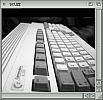Commodore Amiga Retro
Please remember that text for pages was originally
written for my Amiga 1200 to read... so thin paragraphs
Directory Opus 4 : Tutorial One
|
WHAT IS DIRECTORY OPUS ?
One of the questions I seem to get asked by newcomers to the Amiga scene is just what is this program called Directory Opus. I have to reply that I would find using my Amiga pretty impossible without Dopus. With Dopus you can file manage your whole system and find, move and copy files at the drop of a hat. Also its very useful for launching applications and viewing files such as pictures and text documents. I find Dopus invaluable when it comes to creating folders, checking system files and checking the status of files in terms of size and date of entry, particulary after file changes and installs. There is really very little Dopus can`t do and as a guide I have decided that my first Amiga tutorial will feature this most splendid of pieces of software. I will feature Dopus4 as this is my weapon of choice. DIRECTORY OPUS This page will explain those buttons: Fire up DOPUS and you will be greeted by the opening window, which is pretty well where all the activity occurs. One of the first things you will need to do is check that you have configured all your drives on the machine. To do this drop down the first PROJECT menu from the top and hit the CONFIGURATION menu item. You will have the option here of configuring many things but at this time you really need to find your hard-drive, so click DRIVES. Next you will be given a window with all the VOLUME BUTTONS on your machine. If you have downloaded a Configuration File or moved a hard- drive from another location there may be drives that are listed that don`t occur on your machine. Simply click one of the BUTTONS, say HD0 or HD1 or Work say. Don`t worry about messing things up. Next up you will be given another window. Note the name of the VOLUME and check out the magnifying glass next to it. Click it. If the PATH for the VOLUME exists then you will be given a window with the contents of that VOLUME. If however DOPUS cannot find that VOLUME then you will see the screen flash and if you had my machine hear a very sexy woman give out a large sigh. What you need to do from the window if no drive or VOLUME exists is now find your VOLUME on your machine from the drop down list. When you click on your VOLUME you will see the contents of your DRIVE and the name will be entered into the PATH on the window. Say OK. Now enter the name of your Volume in the area that says NAME .. you can also give the tab a new colour and font colour. The name here is not important as the PATH below is what DOPUS looks for. When finished simply OK and then you will cycle back through the windows. On the next screen choose SAVE and then OK this to return to DOPUS. Now, you should have a BUTTON in the bottom left showing your DRIVE. You can have many drives on DOPUS far more than the list shows. To get to other drives simply right click on the BUTTON to cycle through the drives. This is very useful when you are trying to access floppy drives, CD drives, ZIP drives etc. Now when you click the BUTTON of your drive the window above will show the contents of that drive. By clicking the drawer in the PANE above you can access the contents of that drawer. If you highlight the right hand PANE and click your BUTTON you will see again the contents of your DRIVE. If you create a NEW DRAWER in the drive, you can open this, then by highlighting a file on the left pane, COPY the file by clicking the COPY BUTTON and like magic copy that file to the folder in the right PANE. And that is basically file management at its very simplest. I will now refer to CUAmiga which had copies of Dopus4 in their issue for Feb 1995. If you don`t have a copy of DOPUS4 then mail me private.
ALL: Selects all drawers and files in the source window - saving you time.
NONE: Deselects all selected files in the
PARENT: Moves back to the previous drawer ROOT: Moves back to the root directory.
COPY: Highlight one or more files in the
MOVE: Just like Copy, except the file(s) in
RENAME: Click on one or more files and then
DELETE: Highlight files and drawers and click
MAKEDIR: Prompts you for a name and then ASSIGN: To be covered in next TUTORIAL CHECKFIT: Adds up the sizes of all selected FILES/
DRAWERS and sees if they will fit on the drive
GETSIZES: Similar to Checkfit but a quicker
HUNT: search the selected files and drawers in the
SEARCH: Scan through the files and drawers selected
RUN: Executes the selected programs. You`ll be asked
DATESTAMP: Changes the date stamp of the selected PROTECT: To be covered next TUTORIAL.
ICONINFO: Changes icon perameters, similar to
ARC EXTRACT: Extracts files from compressed `LHA`
ENCRYPT: Adds or removes password protection files. READ: Displays the selected TEXT files.
HEX READ: Displays a file using the HEX numbering SHOW: Displays an IFF, Animation, icon or font file.
PLAY: Highlight an 8SVX sound file and click on this PRINT: Print
PATH NAMES: These two allow you to type in PATH
|
If you can only see this CONTENT window
then click the image above for the full site
Last updated 07/10/06
